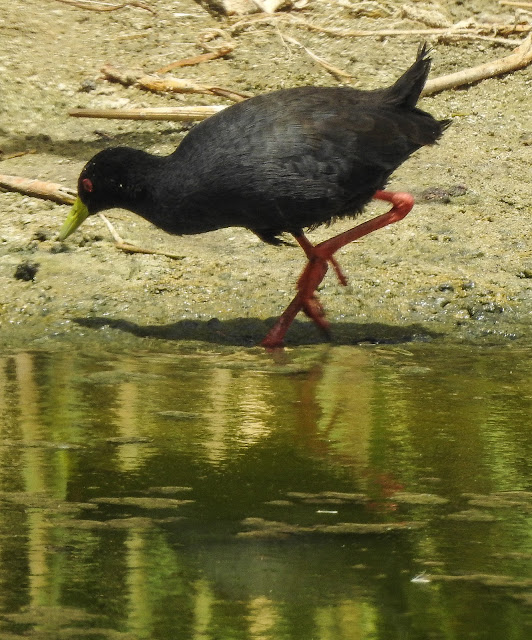The black crake (Zapornia flavirostra) is a waterbird in the rail and crake family, Rallidae. It breeds in most of sub-Saharan Africa except in very arid areas. It undertakes some seasonal movements in those parts of its range which are subject to drought. No subspecies have been described. It appears that the oldest available name for this species is actually Rallus niger J. F. Gmelin, 1788, but Swainson believed that the earlier name was unidentifiable, and his own has since become well embedded in the literature.
The habitat of this common to abundant species is freshwater marshes of all types, as long as there is some vegetation to provide cover. Many rails are very secretive, but the black crake is often seen out in the open. It has benefited from human activity in the form of deforestation, and is rarely hunted because of its unpalatable flesh.
The black crake is extremely aggressive when breeding and will attack birds of many species, but especially other rails. It will attack and kill rails of species as large as itself.
The nest is a deep, neat bowl made from wetland plants and built by both sexes in marsh vegetation or on the ground in a dry location. The nest is also sometimes constructed up to 3 m (9.8 ft) high in a bush.
The two to six, usually three, eggs are cream or white, and spotted with brown or chestnut. Both parents, sometimes assisted by the young from previous broods, incubate for 13–19 days to hatching. The precocial chicks leave the nest in 1–3 days, but are fed by parents and helpers for several weeks. They can fly by 5–6 weeks, and are independent at 6–12 weeks.


